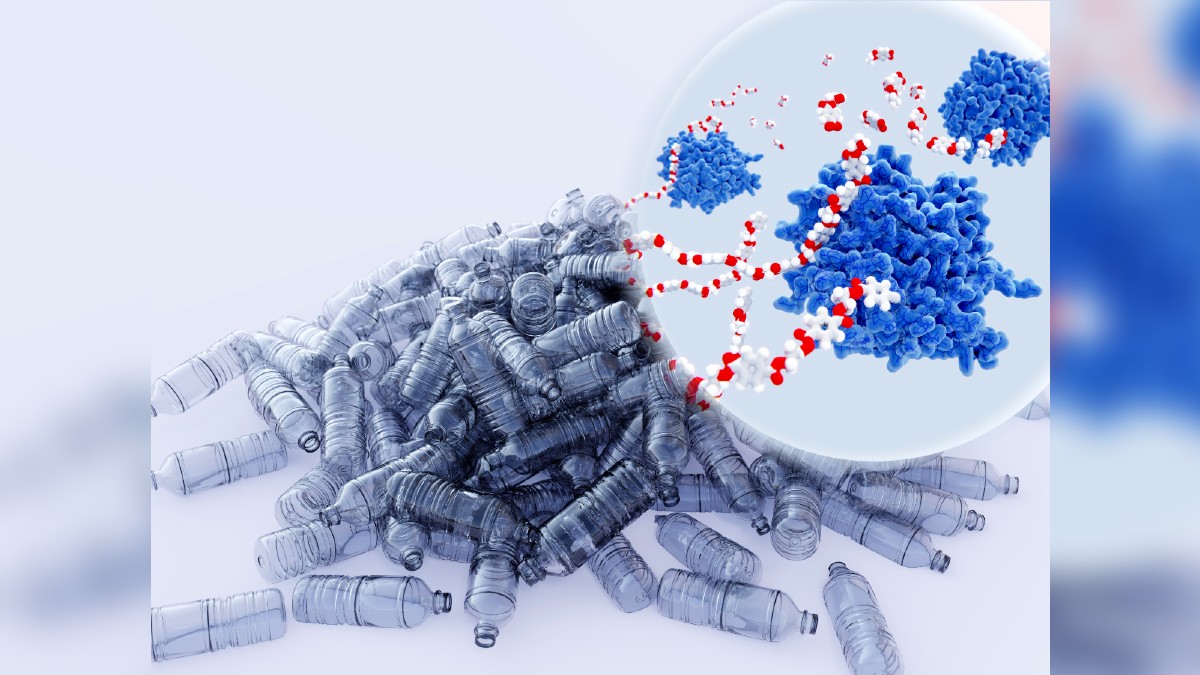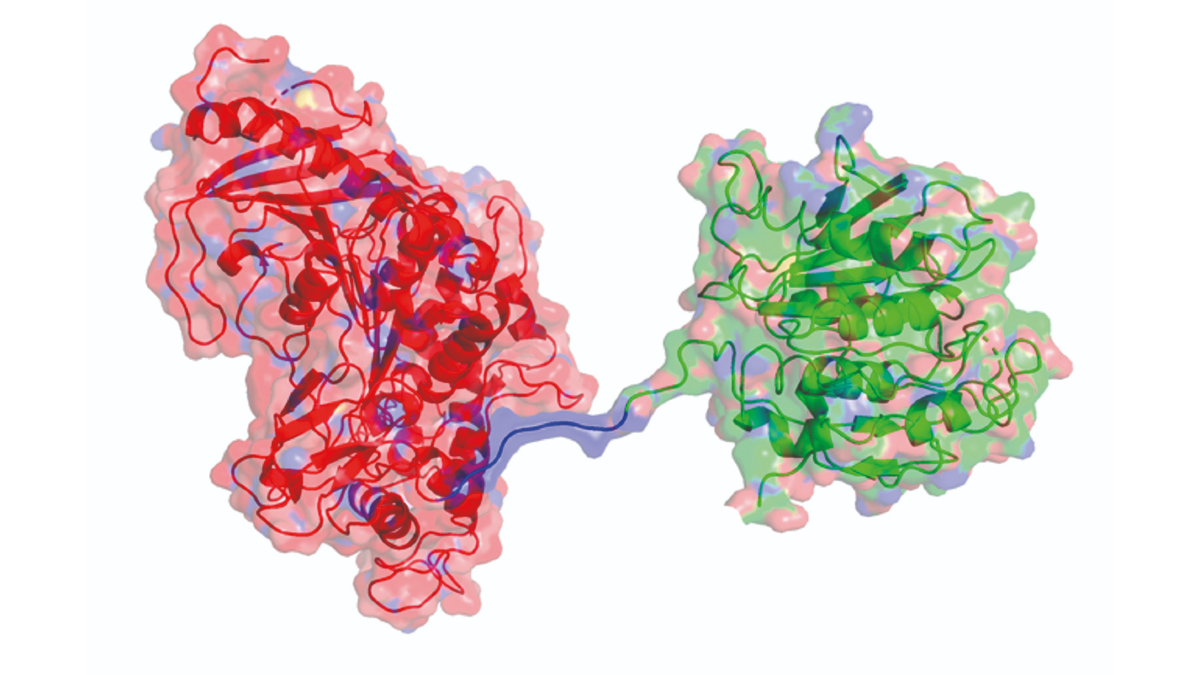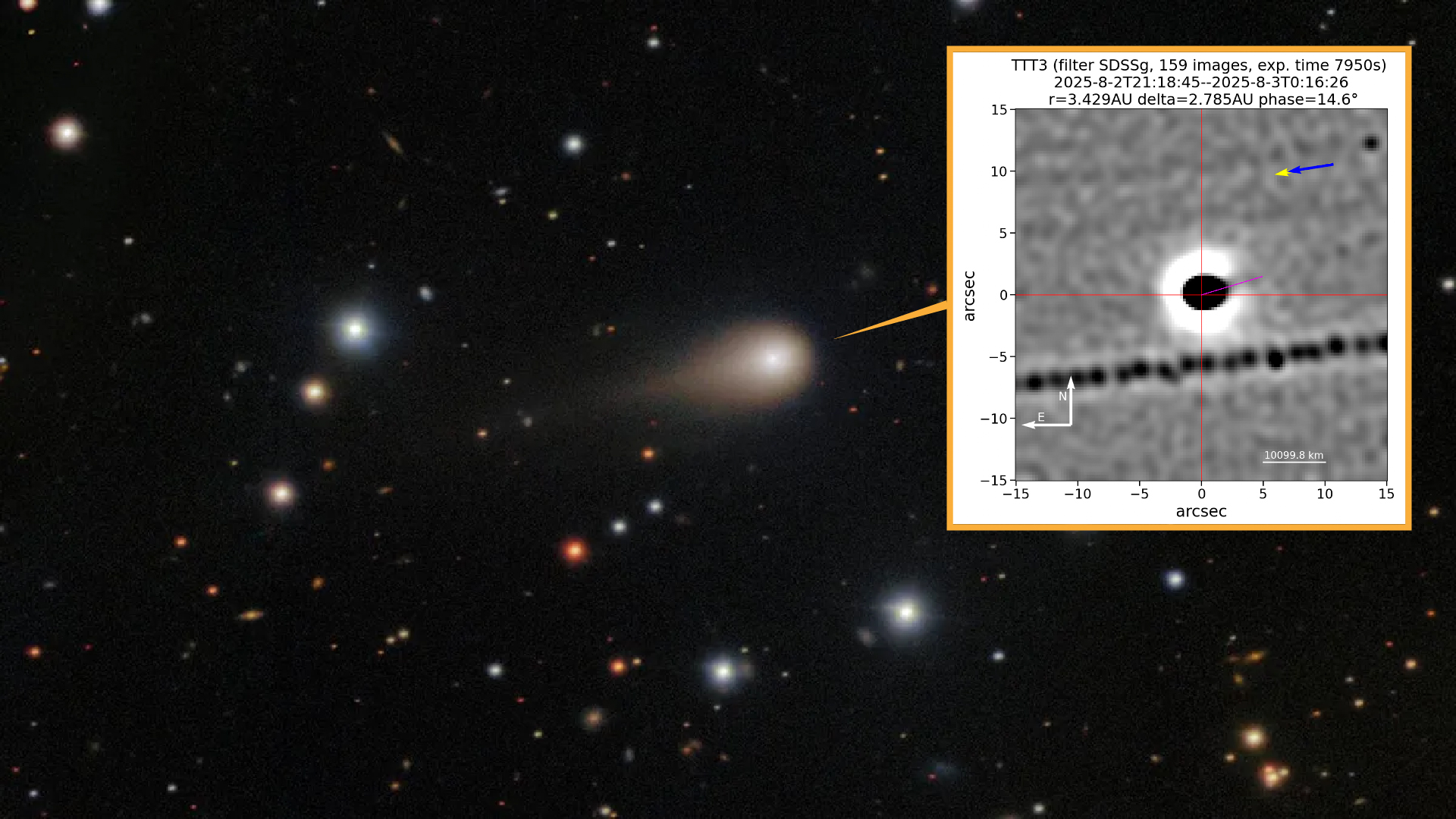Plastic-eating bacteria: Genetic engineering and environmental impact
Discover how plastic-eating bacteria were discovered and re-engineered to help tackle the worlds plastic problem.

Plastic-eating bacteria could help to one day tackle some of the 14 million tons of plastic that is offloaded into our oceans every year. Plastic pollution leads to severe impact on marine ecosystems and can affect human health. For example, once plastic enters the ocean it can suffocate and entangle animals, according to the International Union for Conservation of Nature (IUCN).
Microplastics are also ingested by many marine species that are both preyed upon by other species and that we catch for food. Once ingested, microplastics can leach the toxic contaminants that have collected on their surface into the body of the organism that has consumed it, according to the IUCN.
Those toxins can accumulate and transfer up the food chain from marine life into humans, whenever we eat something that has been taken from the sea. On land, the majority of plastic ends up either building up in landfills or burnt into incinerators, which releases toxic fumes. Just 16% of all plastic produced is recycled to make new plastic, according to the BBC.
However, in 2016 Japanese scientists made a remarkable discovery that could help tackle the world's plastic problem, according to the journal Science. Scientists collected plastic bottles outside a recycling facility, and discovered that a species of bacteria was "eating" its way through them. Normally, bacteria spend their time absorbing dead organic matter, but Ideonella sakaiensis has developed a taste for a certain type of plastic called polyethylene terephthalate (PET).

After analyzing the bacteria, the scientists found that it produced two digestive enzymes called hydrolyzing PET or PETase. When these enzymes interact with PET plastic it breaks down the long molecular chains into shorter chains (monomers) called terephthalic acid and ethylene glycol. These monomers are then broken down further to release energy for growth of the bacteria.
Following the discovery of plastic-eating bacteria, many genetic scientists have experimented with Ideonella sakaiensis to improve its efficiency. One such research venture has been to genetically engineer bacteria that are more efficient at enzyme production, such as E.coli, and turn them into PETase factories.
Although the discovery offers hope in the fight against mounting plastic, scientists caution that we are still years away from widespread commercial use. Similarly, PETase only decomposes PET plastic, there are six other plastic types that we are still unable to degrade using enzymes.
Get the world’s most fascinating discoveries delivered straight to your inbox.
Super PETase
Researchers at the University of Portsmouth have re-engineered PETase to create an enzyme "cocktail" that they say can digest plastic up to six times faster than normal. The scientists combine PETase with another plastic-eating enzyme called MHETase to form one super enzyme, according to the journal Proceedings of the National Academy of Sciences of the United States of America (PNAS).
The combined PETase-MHETase enzyme was created with a synchrotron, a type of particle accelerator that uses x-rays 10 billion times brighter than the sun, according to the University of Portsmouth. It enabled researchers to see the individual atoms of each enzyme and draw their molecular blueprints.
Scientists then stitched their DNA together to form a super enzyme. This enzyme can also break down Polyethylene furanoate (PEF), a sugar-based bioplastic.

Turning plastic into vanilla
Researchers at the University of Edinburgh have been using E. coli bacteria to convert plastic into vanillin, the primary component of vanilla bean extract. Considering that the global demand for vanillin exceeded 40,000 tons (37,000 metric tonnes) in 2018 and 85% is made from chemicals taken from fossil fuels, using plastic could be an eco-friendly alternative situation, as Live Science has previously reported.
After degrading PET plastic into its basic monomers, researchers took the process one step further and converted one of those monomers, terephthalic acid, into vanillin through a series of chemical reactions. The resulting vanillin is believed to be fit for human consumption, though further investigation is needed.
Additional resources
For more information about Earth’s plastic problem, check out the plastic pollution webpages of Greenpeace and WWF. If you’d like more information about how you could reduce your plastic use, check out "How to Give Up Plastic: A Guide to Changing the World, One Plastic Bottle at a Time" by Will McCallum and "How to Save the World For Free" by Natalie Fee.
Bibliography
- IUCN, "Marine plastic pollution", November 2021
- Shosuke Yoshida, et al, "A bacterium that degrades and assimilates poly(ethylene terephthalate)”, Science, Volume 351, March 2016.
- Ankita Maurya, "Enzymatic Remediation of Polyethylene Terephthalate (PET)–Based Polymers for Effective Management of Plastic Wastes: An Overview", frontiers in Bioengineering and Biotechnology, Volume 8, November 2020.
- Brandon C. Knott, et al, "Characterization and engineering of a two-enzyme system for plastics depolymerization", PNAS, Volume 117, September 2020.
- Rumiana Tenchov, "Can plastic eating super-enzymes solve our destructive plastic problem?", CAS, March 2021.
- Katherine Latham, "The world's first 'infinite' plastic", BBC, May 2021.
- Scott Carpenter, "The Race To Develop Plastic-Eating Bacteria", Forbes, March 2021.
- University of Edinburgh, "Bacteria: Serving tasty solution to global plastic crisis" ScienceDaily, June 2021.
- University of Portsmouth, "New enzyme cocktail digests plastic waste six times faster", September 2020.
- University of Edinburgh, "Bacteria serves tasty solution to plastic crisis", June 2021.

Scott is a staff writer for How It Works magazine and has previously written for other science and knowledge outlets, including BBC Wildlife magazine, World of Animals magazine, Space.com and All About History magazine. Scott has a masters in science and environmental journalism and a bachelor's degree in conservation biology degree from the University of Lincoln in the U.K. During his academic and professional career, Scott has participated in several animal conservation projects, including English bird surveys, wolf monitoring in Germany and leopard tracking in South Africa.
